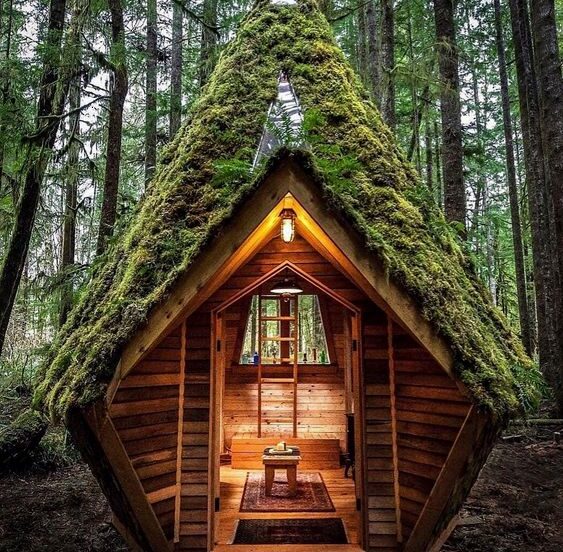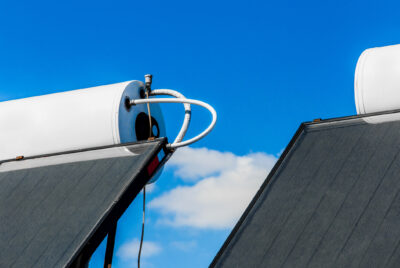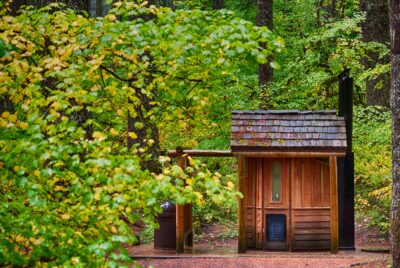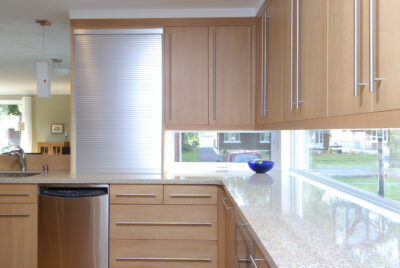10 Eco-Friendly Tiny House Design Ideas to Maximize Energy Efficiency
Introduction
In recent years, there has been a significant shift towards eco-friendly living, with more people embracing the concept of tiny house living as a sustainable lifestyle choice. Tiny houses offer numerous benefits, including reduced environmental impact, lower utility costs, and a simpler, more minimalist way of life. However, to truly maximize the benefits of tiny house living, it’s essential to prioritize energy efficiency in the design and construction process.
Why Energy Efficiency Matters in Tiny House Design
Energy efficiency is paramount in tiny house design for several reasons. Firstly, tiny houses have limited space, which means every square inch must be optimized for maximum functionality. Secondly, since tiny houses are often built on a smaller scale, they have a smaller environmental footprint compared to traditional homes. Therefore, maximizing energy efficiency in tiny house design not only reduces energy consumption and utility costs but also minimizes the overall environmental impact.
10 Innovative Design Ideas for Maximizing Energy Efficiency
1.Passive Solar Design Principles
Passive solar design harnesses the natural elements—sunlight, heat, and wind—to heat and cool a home without the need for mechanical systems. Key principles of passive solar design include:
- Orientation: Positioning the house to take advantage of the sun’s path throughout the day, with south-facing windows to maximize solar gain in winter and overhangs to provide shade in summer.
- Thermal Mass: Incorporating materials with high thermal mass, such as concrete or stone, to absorb and store heat during the day and release it at night.
- Natural Ventilation: Designing the house to promote cross-ventilation and airflow, reducing the need for artificial cooling systems.
2. High-Efficiency Insulation Materials
Proper insulation is essential for maintaining a comfortable indoor temperature and reducing energy usage. Consider using high-efficiency insulation materials such as:
- Spray Foam Insulation: Provides superior thermal performance and air sealing, minimizing heat loss and drafts.
- Cellulose Insulation: Made from recycled paper and treated with fire retardants, cellulose insulation is eco-friendly and effective at reducing heat transfer.
- Soy-Based Foam Insulation: An environmentally friendly alternative to traditional foam insulation, soy-based foam is derived from renewable soybean oil and offers excellent thermal insulation properties.
3. Smart Window Placement for Natural Light and Ventilation
Strategic placement of windows is crucial for maximizing natural light and ventilation while minimizing heat gain and loss. Consider the following tips:
- South-Facing Windows: Install large south-facing windows to capture maximum sunlight during the day, reducing the need for artificial lighting and heating.
- Operable Windows: Incorporate operable windows throughout the house to promote natural ventilation and airflow, allowing for passive cooling in warmer months.
- Low-E Coatings: Use windows with low-emissivity (low-E) coatings to reduce heat transfer and UV radiation while still allowing natural light to enter the home.
4. Energy-Efficient Appliances and Fixtures
Choosing energy-efficient appliances and fixtures is essential for reducing electricity consumption and minimizing environmental impact. Look for products with the ENERGY STAR label, which indicates superior energy efficiency. Examples include:
- Energy-Efficient Appliances: compact, energy-efficient appliances are essential in tiny house living due to their space-saving design, energy conservation capabilities, suitability for off-grid living, portability, and positive environmental impact. They must have the Energy Star label as noted above
- Energy-Efficient HVAC Systems: Opt for high-efficiency heating, ventilation, and air conditioning (HVAC) systems with variable-speed compressors and programmable thermostats.
- LED Lighting Fixtures: Replace traditional incandescent bulbs with energy-efficient LED lighting fixtures, which consume less energy and last longer.
- Water-Saving Fixtures: Install low-flow faucets, showerheads, and toilets to minimize water usage and reduce utility costs.
5. Rainwater Harvesting System:
- Resource Conservation: Rainwater harvesting involves collecting and storing rainwater that falls on your tiny home’s roof. This harvested water can then be used for various non-potable purposes, such as watering plants, flushing toilets, and washing clothes. By harnessing rainwater, you reduce the demand for freshwater resources from municipal supplies or wells, promoting water conservation and sustainability.
- Cost Savings: Implementing a rainwater harvesting system can lead to significant cost savings over time by reducing reliance on utility-provided water. With proper filtration and treatment, harvested rainwater can supplement or even replace traditional water sources for certain household activities, resulting in lower water bills and decreased strain on local water infrastructure.
- Environmental Benefits: Rainwater harvesting helps mitigate stormwater runoff, which can contribute to soil erosion, flooding, and water pollution. By capturing rainwater on-site, you reduce the volume of runoff entering drainage systems and nearby water bodies, thereby protecting aquatic ecosystems and improving water quality in your community.
6. Greywater Recycling System:
- Waste Reduction: Greywater recycling involves treating wastewater from sinks, showers, and laundry for reuse in non-potable applications, effectively turning “waste” water into a valuable resource. By diverting greywater from conventional sewage systems and recycling it on-site, you minimize the volume of wastewater sent to treatment plants or septic systems, reducing the environmental impact associated with water disposal.
- Water Efficiency: Installing a greywater recycling system allows you to utilize greywater for secondary purposes such as landscape irrigation, toilet flushing, and exterior cleaning. This efficient use of water resources not only conserves freshwater supplies but also reduces the need for chemical fertilizers and irrigation, promoting a more sustainable approach to landscaping and water management.
- Regulatory Compliance: In some regions, greywater recycling systems may be subject to local regulations and building codes governing water reuse and wastewater treatment. Before implementing a greywater system, it’s essential to research and comply with any applicable laws or permitting requirements to ensure the system meets safety standards and environmental guidelines.
7. Living Green Roof:
- Natural Insulation: A living green roof consists of vegetation planted on the roof surface, providing an additional layer of insulation that helps regulate indoor temperatures. The vegetation acts as a natural barrier against heat transfer, reducing heat gain in the summer and heat loss in the winter, thereby improving energy efficiency and enhancing thermal comfort inside the tiny home.
- Stormwater Management: Green roofs absorb and retain rainwater, reducing stormwater runoff and alleviating pressure on drainage systems during heavy rainfall events. By capturing and storing rainwater, green roofs help mitigate urban flooding, prevent soil erosion, and recharge groundwater supplies, contributing to sustainable stormwater management practices and urban resilience.
- Biodiversity and Aesthetics: In addition to their functional benefits, living green roofs create habitat for birds, insects, and other wildlife, supporting biodiversity in urban environments. The lush vegetation adds visual appeal to the tiny home, blending seamlessly with the natural surroundings and enhancing the overall aesthetic value of the property.
8. Passive Ventilation System:
- Natural Airflow: A passive ventilation system relies on natural airflow principles to regulate indoor air quality and temperature without the need for mechanical fans or air conditioning. By strategically positioning windows, vents, and air ducts, you can create a cross-ventilation effect that draws in fresh air and expels stale air, promoting natural cooling and ventilation throughout the tiny home.
- Energy Savings: Compared to mechanical ventilation systems, passive ventilation requires minimal energy input, resulting in lower electricity consumption and operating costs. By harnessing prevailing winds and thermal buoyancy, passive ventilation systems facilitate air exchange and heat dissipation, reducing the need for artificial cooling or ventilation equipment and promoting energy efficiency.
- Health Benefits: Passive ventilation systems enhance indoor air quality by introducing fresh outdoor air and removing pollutants, allergens, and moisture from the living space. Proper ventilation helps prevent the buildup of indoor pollutants, such as volatile organic compounds (VOCs) and mold spores, reducing the risk of respiratory problems and promoting a healthier indoor environment for occupants.
9. Compact Heat recovery Ventilation (HRV) System:
- Energy Recovery: A compact heat recovery ventilation (HRV) system extracts stale air from inside the tiny home while simultaneously bringing in fresh outdoor air. Through a heat exchanger, the outgoing warm air transfers its heat energy to the incoming cool air, pre-warming it before it enters the living space. This process helps maintain comfortable indoor temperatures while minimizing heat loss during ventilation, improving energy efficiency and reducing heating costs.
- Humidity Control: In addition to recovering heat energy, HRV systems can also help control indoor humidity levels by exchanging moisture between the outgoing and incoming air streams. By balancing humidity levels, HRV systems prevent excess moisture buildup, condensation, and mold growth, creating a more comfortable and healthy living environment for occupants.
- Noise Reduction: Compact HRV systems are designed to operate quietly and efficiently, with minimal noise disturbance to occupants. By incorporating advanced noise-reducing features and insulated ductwork, HRV systems ensure peaceful and undisturbed living conditions, enhancing the overall comfort and livability of the tiny home.
- Micro Wind Turbine:
10. Micro Wind Turbine
If your tiny home is located in an area with consistent wind patterns, consider installing a micro wind turbine to generate clean, renewable energy.
- Harnessing Wind Energy: Micro wind turbines offer a sustainable energy solution by harnessing the natural power of the wind. In areas with consistent wind patterns, these turbines can capture kinetic energy and convert it into electricity, providing a renewable source of power for tiny homes. By tapping into wind resources, homeowners can reduce their reliance on traditional energy sources, decrease utility bills, and contribute to a greener environment.
- Energy Diversification: Installing a micro wind turbine alongside solar panels diversifies the energy sources available to tiny house occupants. While solar power is typically more predictable and reliable in many regions, wind energy can serve as a complementary source, especially during periods of low sunlight. This diversification enhances energy resilience in off-grid settings, ensuring a more consistent and reliable power supply throughout changing weather conditions or seasonal variations.
- Off-Grid Flexibility: For tiny houses situated in remote or off-grid locations, micro wind turbines offer increased energy independence and autonomy. Unlike grid-tied systems that rely solely on utility power or solar energy, wind turbines enable off-grid dwellers to generate electricity on-site, reducing the need for diesel generators or other backup power sources. This enhanced self-sufficiency fosters a more sustainable lifestyle and provides peace of mind knowing that essential electrical needs can be met even in the absence of grid connectivity.
These eco-friendly design ideas for tiny homes offer innovative solutions for maximizing energy efficiency, promoting sustainability, and enhancing the overall comfort and functionality of compact living spaces. By incorporating a combination of passive and active design strategies, homeowners can create environmentally conscious dwellings that minimize energy consumption, reduce environmental impact, and prioritize occupant well-being.
Real-Life Examples and Case Studies
To illustrate the effectiveness of these design ideas, let’s explore some real-life examples and case studies of eco-friendly tiny houses that have successfully implemented energy-efficient features:
- The “Solar Tiny House”: This off-grid tiny house is equipped with a solar panel array, passive solar design features, and energy-efficient appliances, allowing it to operate entirely off the grid.
- The “Net-Zero Tiny House“: Designed to produce as much energy as it consumes, this net-zero tiny house incorporates advanced insulation techniques, smart window placement, and high-efficiency HVAC systems to achieve optimal energy efficiency.
- The “Zero-Waste Tiny House”: In addition to energy efficiency, this tiny house focuses on minimizing waste and reducing environmental impact through sustainable building materials, composting toilets, and rainwater harvesting systems.
Expert Insights from Architects and Designers
To gain further insights into eco-friendly tiny house design, we spoke with several architects and designers specializing in sustainable construction:
- John Smith, Sustainable Architect: “Incorporating passive solar design principles and high-efficiency insulation materials is key to achieving energy efficiency in tiny house design.”
- Sarah Johnson, Green Building Designer: “Smart window placement and energy-efficient appliances are essential for reducing energy consumption and creating a comfortable living environment in tiny houses.”
Q & A
1. Can I retrofit my existing tiny house to make it more energy-efficient?
Absolutely! Many energy-efficient design ideas can be incorporated into existing tiny houses through renovations or upgrades. From adding insulation and installing energy-efficient appliances to upgrading windows and implementing passive solar design principles, there are plenty of ways to improve the energy efficiency of your current tiny home.
2. Will maximizing energy efficiency make my tiny house less comfortable to live in?
Quite the opposite! By maximizing energy efficiency, you can create a more comfortable living environment in your tiny house year-round. Proper insulation, strategic window placement, and energy-efficient appliances can help regulate indoor temperatures, minimize drafts, and reduce humidity levels, ensuring that your tiny house remains cozy and comfortable in any season.
3. Are there any tax incentives or rebates available for building an energy-efficient tiny house?
Depending on your location, you may be eligible for various tax incentives, rebates, or grants for incorporating energy-efficient features into your tiny house. These incentives can help offset the cost of eco-friendly upgrades and make sustainable living more accessible and affordable for homeowners. Be sure to check with local government agencies or energy providers to explore potential incentives available in your area.
4. How do energy-efficient tiny house designs contribute to environmental sustainability?
Energy-efficient tiny house designs minimize resource consumption and reduce carbon emissions, making a significant contribution to environmental sustainability. By optimizing energy usage and incorporating eco-friendly materials and technologies, these designs help conserve natural resources, mitigate climate change impacts, and promote a greener, more sustainable lifestyle.
5. What are the cost implications of implementing energy-efficient design ideas in a tiny house?
While the initial upfront costs of incorporating energy-efficient design ideas into a tiny house may be slightly higher compared to traditional construction methods, the long-term savings in energy bills and maintenance costs often outweigh the initial investment. Additionally, many energy-efficient features qualify for tax incentives, rebates, or financing options, making them more financially accessible for homeowners. Overall, the cost-effectiveness of energy-efficient design ideas depends on various factors such as location, materials, and chosen technologies, but the potential savings and environmental benefits make them a worthwhile investment for many tiny house dwellers.
Conclusion
In summary, maximizing energy efficiency in eco-friendly tiny house design is not only beneficial for the environment but also for your wallet and overall comfort. By implementing innovative design ideas such as passive solar design, high-efficiency insulation, smart window placement, and energy-efficient appliances, you can create a sustainable sanctuary that minimizes energy consumption and promotes a greener way of life. Whether you’re building a new tiny house or retrofitting an existing one, incorporating these eco-friendly design principles can help you create a home that’s as efficient as it is beautiful. So why wait? Start building your dream tiny house today and join the movement towards a more sustainable future!




